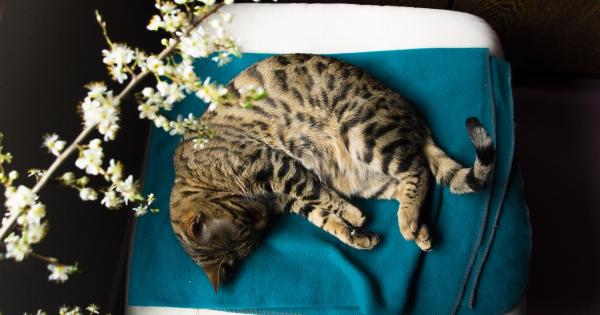If you are considering adding a Bengal breed to your family, you are in for a treat! Bengal cats are often referred to as miniature leopards due to their striking coat patterns, resembling those of their wild relatives.
This guide will provide you with valuable insights into living harmoniously with a Bengal cat, from their unique characteristics and temperament to their care needs and more.
1. Bengal Cat Breeds: An Overview
Bengal cats are a breed that originated from the crossbreeding of domestic cats with Asian leopard cats. This unique breeding has resulted in a stunning breed that displays the beauty of wild cats with the affectionate nature of domestic cats.
Bengal cats are medium to large-sized cats with muscular bodies and expressive eyes.
2. Bengal Cat Characteristics
Bengal cats are easily recognizable due to their distinct coat patterns, known as “rosettes.” These rosettes closely resemble those found on leopards, providing them with their nickname, miniature leopards.
The coat colors of Bengal cats can vary, but they often have a background color of orange, buff, or creamy white, with rosettes in shades of brown, black, or charcoal.
In addition to their coat patterns, Bengal cats have strong, muscular bodies, usually with hind legs slightly longer than their front legs. This aspect of their physique contributes to their incredible jumping and agility skills.
3. Bengal Cat Temperament and Personality
One of the most enticing traits of Bengal cats is their energetic and playful nature. These cats love to explore, climb, and play interactive games.
They are highly intelligent and curious, requiring plenty of mental stimulation and enrichment activities to keep them happy and content.
Bengal cats are also known for their vocal nature. They can be quite chatty and will often engage in conversations with their human family members. However, their voices are not loud or demanding, but rather gentle and melodic.
4. Bengal Cat Grooming
The good news for potential Bengal cat owners is that these cats have relatively low grooming requirements. Their short coats do not mat easily, and they do not need frequent bathing.
Regular brushing to remove loose hair and prevent hairballs is sufficient. Additionally, providing scratching posts and toys can help fulfill their natural need to groom and keep their nails healthy.
5. Bengal Cat Diet
Like all cats, Bengal cats require a balanced diet to maintain optimal health. High-quality cat food that meets their specific nutritional needs is essential.
Consult with your veterinarian to determine the appropriate serving size and frequency of meals for your Bengal cat. Freshwater should always be available, and treats should be given sparingly to avoid excessive weight gain.
6. Bengal Cat Exercise and Enrichment
Bengal cats are active and athletic, making regular exercise and environmental enrichment crucial for their well-being. Provide them with interactive toys, climbing trees, scratching posts, and plenty of playtime.
Engaging in interactive play sessions will help them burn off energy and keep them mentally stimulated.
7. Bengal Cat Behavior
Bengal cats are known for their mischievous and curious nature. They enjoy investigating their surroundings and may occasionally get themselves into trouble. These cats require a safe and secure environment to prevent potential hazards.
Bengal cats also thrive on human attention and may become bored or lonely if left alone for extended periods, so it’s important to spend quality time with them on a daily basis.
8. Bengal Cat Training
Training a Bengal cat can be a fulfilling experience for both the cat and their owner. These cats are highly intelligent and can learn various commands and tricks with positive reinforcement training methods.
Use treats and praise to reward good behavior and discourage undesirable behaviors. Basic training, such as teaching your Bengal cat to come when called or to use a scratching post, can greatly enhance their quality of life and strengthen the bond between you.
9. Socializing a Bengal Cat
Proper socialization is crucial for Bengal cats to ensure they become well-adjusted and friendly companions.
Early socialization is recommended, exposing them to different people, animals, and environments to help them develop confidence and reduce the likelihood of fear or aggression later in life. A well-socialized Bengal cat will be comfortable around strangers and other pets, making them a joy to have in any household.
10. Health Considerations for Bengal Cats
Bengal cats are generally healthy and do not have any specific breed-related health concerns. However, it is essential to schedule regular veterinary check-ups and vaccinations to maintain their overall well-being.
Spaying or neutering your Bengal cat is also an important step to prevent unwanted behaviors and potential health issues.
In conclusion, Bengal cats are enchanting companions that bring a touch of the wild into your home.
By understanding their unique characteristics, providing them with proper care, and devoting time to their mental and physical enrichment, you can have a harmonious and fulfilling relationship with your very own miniature leopard.






























